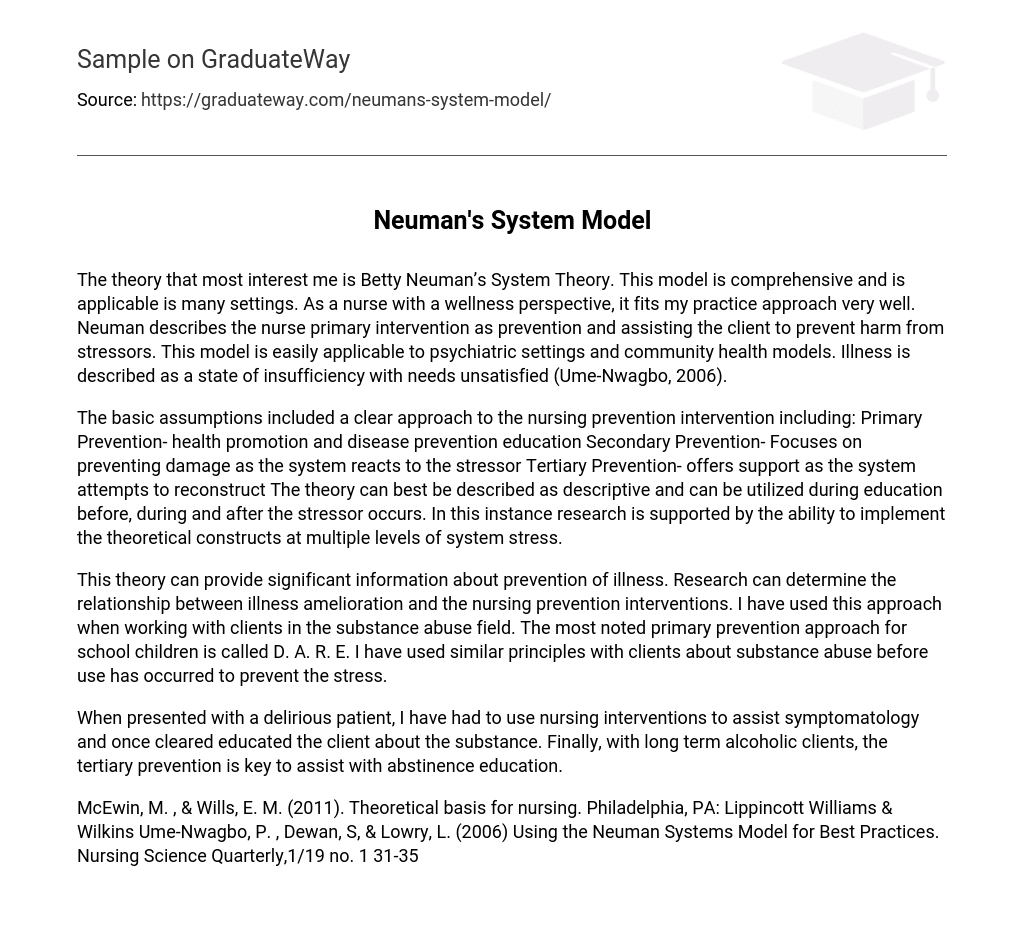The theory that I am most interested in is Betty Neuman’s System Theory. This model is extensive and can be used in various settings. As a nurse who focuses on wellness, it aligns well with my approach to practice. Neuman explains that the nurse’s main role is prevention and helping clients avoid harm from stressors. This model can be readily applied to psychiatric settings and community health models. Illness is defined as a state of lacking fulfillment with unmet needs (Ume-Nwagbo, 2006).
The nursing prevention intervention includes three main components: Primary Prevention, which involves health promotion and disease prevention education; Secondary Prevention, which focuses on preventing damage as the system reacts to the stressor; and Tertiary Prevention, which offers support as the system attempts to reconstruct. This theory is descriptive in nature and can be applied during education before, during, and after the stressor occurs. Research in this area is well-supported due to the ability to implement the theoretical constructs at various levels of system stress.
This theory can offer valuable insights into illness prevention. Research can establish a connection between improving illness and nursing interventions for prevention. I have employed this method while assisting clients in the substance abuse realm. The most well-known primary prevention method for school children is known as D.A.R.E. I have applied similar principles to educate clients about substance abuse in order to prevent its occurrence and alleviate stress.
When dealing with a patient experiencing delirium, I have employed nursing interventions to address symptoms and provided education to the patient once symptoms have subsided. Additionally, in the case of long-term alcoholic patients, tertiary prevention plays a crucial role in helping them with abstinence education.
McEwin, M., & Wills, E. M. (2011). Theoretical basis for nursing. Philadelphia, PA: Lippincott Williams & Wilkins
Ume-Nwagbo, P., Dewan, S., & Lowry, L. (2006). Using the Neuman Systems Model for Best Practices. Nursing Science Quarterly, 1/19(1), 31-35





